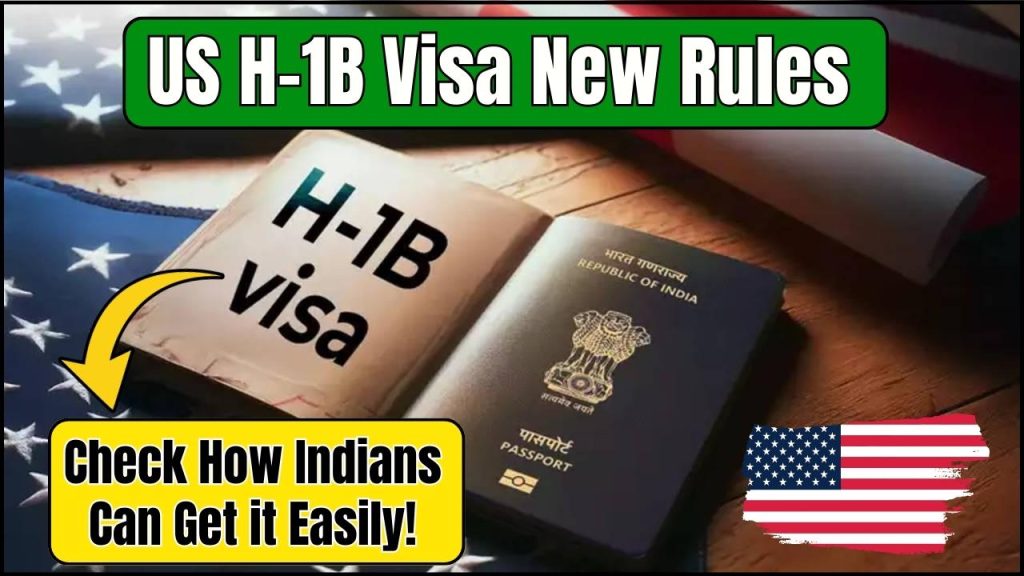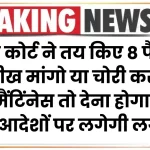US H-1B Visa New Rules: The US H-1B visa program is a highly sought-after work visa that allows skilled professionals to work in the United States for up to six years. Recent H-1B visa rule changes by the US Department of Homeland Security (DHS) have introduced new measures to improve flexibility, streamline processes, and enhance integrity. These updates present new opportunities for Indian professionals looking to work in the US.

In this article, we’ll explore the latest H-1B visa updates, their impact on Indian applicants, and actionable steps to improve your chances of obtaining this visa.
US H-1B Visa New Rules
| Topic | Details |
|---|---|
| New H-1B Rule Changes | Increased flexibility and program integrity measures |
| F-1 Visa Holders | Automatic extension until April 1 during the application process |
| Cap-Exempt Employers | Nonprofit and government organizations now qualify |
| Specialty Occupations | Broader eligibility for various degree holders |
| Official Resources | USCIS Official Website |
The recent US H-1B visa rule changes provide significant opportunities for Indian professionals aiming to work in the US. By understanding the new guidelines, aligning qualifications with job requirements, and targeting cap-exempt employers, applicants can improve their chances of success. Stay informed, plan strategically, and seek guidance from immigration experts if needed.
What Are the New H-1B Visa Rules?
The updated H-1B visa regulations, effective from January 17, 2025, introduce several key changes to enhance transparency and flexibility for applicants and employers. Here are some of the most important updates:
1. Expanded Specialty Occupations Criteria
Previously, the H-1B visa required a “specialty occupation” with a direct link between the applicant’s degree and job role. Under the new rules:
- A broader range of degrees will now qualify.
- Employers must clearly demonstrate how the degree relates to job responsibilities.
- Applicants with multiple related qualifications will have an easier pathway.
2. F-1 Student Visa Transition Improvements
The new regulations offer automatic extensions for F-1 visa holders who apply for an H-1B visa. This prevents gaps in employment while their petition is being processed.
Example: If an F-1 visa holder applies for an H-1B visa in March, their current visa will automatically extend until April 1 of the following year.
3. Cap-Exempt H-1B Petitions
Certain organizations are now exempt from the annual H-1B visa cap, such as:
- Nonprofit organizations engaged in research.
- Government entities contributing to research.
- Educational institutions offering specialized roles.
4. Stricter Compliance Measures
To combat fraud, employers are now required to provide:
- Stronger documentation proving job specialty.
- Evidence of their operations in the US.
- Proof that offered salaries align with market standards.
How Indians Can Benefit from the New Rules
Indians are the largest recipients of H-1B visas, and these changes can improve their chances of securing employment in the US. Here’s how:
1. Choose the Right Degree and Job Role
- Select careers in STEM (Science, Technology, Engineering, Mathematics) fields, which have higher demand.
- Align academic qualifications with job descriptions to ensure eligibility.
2. Target Cap-Exempt Employers
- Seek employment with universities, nonprofits, or government-linked research organizations.
- These employers can sponsor H-1B visas without worrying about the annual quota.
3. Leverage the F-1 Visa Extension
- Indian students studying in the US should apply for an H-1B visa early to benefit from the automatic extension feature.
Step-by-Step Guide to Applying for an H-1B Visa
If you’re an Indian professional planning to apply for the H-1B visa, follow these steps to increase your chances of success:
Step 1: Find a Sponsor Employer
Identify a US-based employer willing to sponsor your H-1B petition. This could be through job portals, LinkedIn, or networking events.
Step 2: Employer Files H-1B Registration
Your employer must submit an electronic registration during the annual registration window, typically in March.
Step 3: Lottery Selection (If Applicable)
If the number of applicants exceeds the cap, a lottery system will determine who can file full petitions.
Step 4: File the H-1B Petition
Upon selection, the employer files Form I-129 (Petition for a Nonimmigrant Worker) with USCIS.
Step 5: Attend Visa Interview
Once the petition is approved, applicants must attend an interview at the US consulate in India.
Step 6: Receive Visa and Start Work
After approval, the applicant can travel to the US and begin employment under H-1B status.
USA O-1 Work Visa 2025 Application Process & Criteria Unchanged – Check Details
Australian Work Visas 2025: What’s New? Check Updated Types & Changes Here!
Dream of Working in Greenland? 2025 Work Visa Application Process Explained!
Frequently Asked Questions About US H-1B Visa New Rules
Q1: How long does it take to process an H-1B visa? A: Standard processing takes 3 to 6 months, but premium processing (for an additional fee) can reduce it to 15 days.
Q2: What is the H-1B visa cap for 2025? A: The annual cap remains at 85,000 visas, with 20,000 reserved for those with US master’s degrees.
Q3: Can I apply for a Green Card while on an H-1B visa? A: Yes, the H-1B visa is a “dual intent” visa, allowing applicants to pursue permanent residency.
Q4: Can I switch employers on an H-1B visa? A: Yes, you can switch employers by filing an H-1B transfer petition.
Q5: What happens if my H-1B visa application is denied? A: You can appeal the decision, reapply, or explore alternative visa options like the L-1 or O-1 visas.











